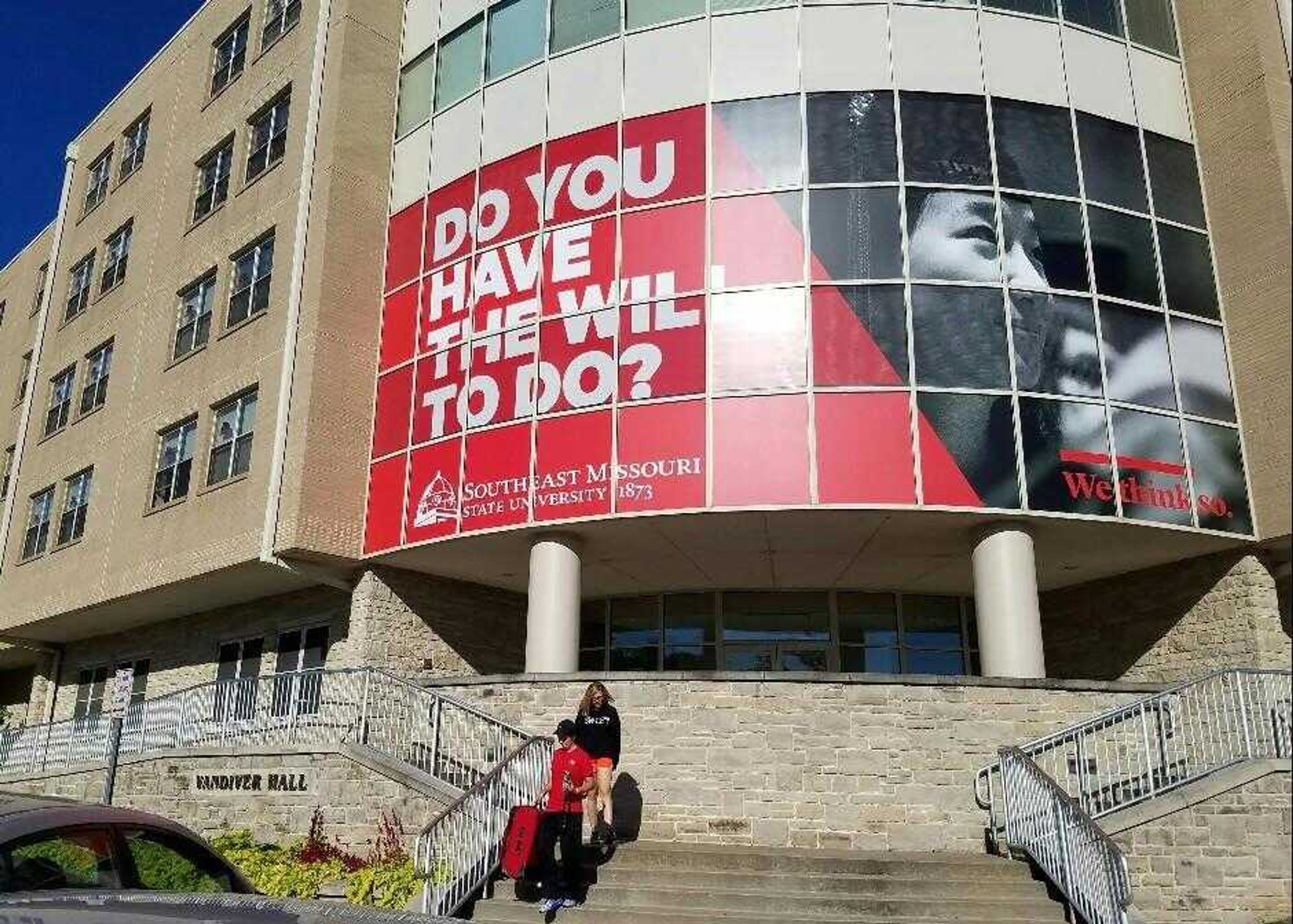It’s been one year and seven months since the Board of Regents approved the current Southeast Missouri State University logo and the “Will to Do” branding initiative. For the first time this fall, Southeast welcomed new students who were exposed to the campaign for the first time through their admissions marketing materials. “Will to Do” has been utilized across Southeast print, radio, television and web advertisements and throughout the campus.
According to Jeff Harmon, executive director of University Communications and Marketing, the feedback to the initiative has been “very positive thus far.”
“We’re getting really great feedback from prospective students, and the alumni are very pleased,” Harmon said. “Our alumni feel like this has been a great thing, which helps them look at where they went to school in a different light. I think it helps them think of their children as future students (at Southeast) more likely now. Also, current students and new students that we interact with have responded very positively to it.”
Ologie, a Columbus, Ohio-based branding and marketing firm, was hired by Southeast in the spring semester of 2014 to help the university’s communications and marketing department research and design a new logo, font and message for the university.
Initially, according to Harmon, some individuals weren’t in favor of changing the university’s branding. However, he said the brand has been “much more happily adopted over time.”
“If they went back and looked at some of our admissions and marketing materials over the past five to 10 years, they’d notice the dome wasn’t present in many of the materials,” Harmon said. “Since the materials were smaller, the dome would become unrecognizable, and embroidering it was difficult. What we were trying to do is modernize it and make it simpler.”
Dr. Dena Hale, assistant professor of marketing, said based on her experience as a small business owner, the best way to build a brand is to make it personal and relevant to the consumer.
The owner of a laundromat and a coffeehouse in Murphysboro, Illinois, Hale said the personability of a brand comes from giving back to the community and cooperating with customers, which she thinks Southeast’s does effectively in regard to students.
“The brand puts it back on the student asking, ‘What are you willing to do?’” Hale said. “Then the student can also ask, ‘What are you willing to do?’ It shows co-production and coexistence; we’re creating this together and it really is about co-ownership. To me, it’s personal, comprehensive and holistic and can stand the test of time.”
However, Hale added the brand could have a greater presence in classrooms across the campus.
“I’d like to see it in the classroom, I don’t think it would be distracting,” Hale said. “I think it’d be part of the atmospherics because we’re offering services to students. You want to have that consistency everywhere they walk so it’s a continual part of the experience saying, ‘You are a Redhawk, this is “Will to Do.”’”
Harmon said research will be conducted and adjustments will be made in the next couple of years to refine the brand further.
“You’re going to see us continue down this course for several years,” Harmon said. “If you look at the solid brands like Nike, McDonald's and Coke, they stay with their brands for a long time. They articulate the same message and characterization for years. The reason they do that is because it takes a couple of years to become effective. By year three of this brand, I think you’ll see a bigger response from our target audience.”




